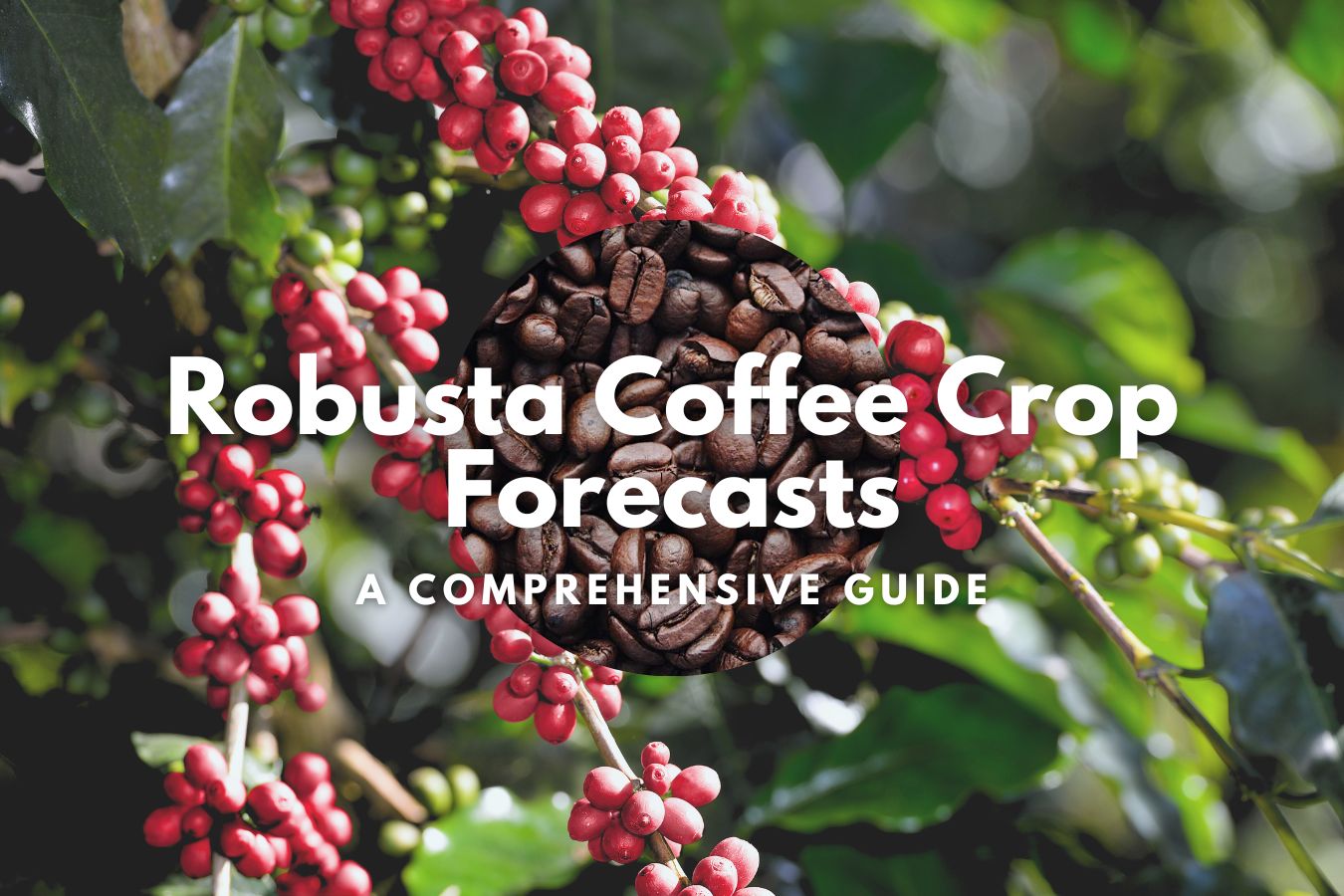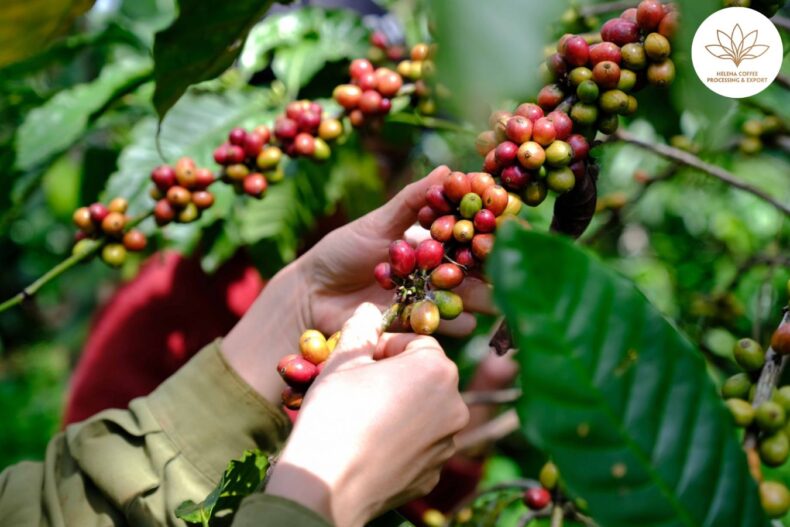
As the world’s second most traded commodity, coffee is essential to our daily lives. Robusta coffee, known for its strong taste and high caffeine content, is critical in many coffee blends. However, like any agricultural crop, the production of Robusta coffee is subject to fluctuation due to various factors. This article will explore Robusta coffee crop forecasts and the factors affecting its production.
Coffee is a crucial cash crop for many countries worldwide, and Robusta coffee is no exception. It is grown mainly in tropical regions, with Vietnam being the world’s largest producer. The Robusta coffee crop is vital for both domestic consumption and export markets. However, its production is subject to several factors affecting its yield. In this article, we will explore the various factors that affect Robusta coffee crop forecasts.
Understanding Robusta Coffee
Before delving into the factors that affect Robusta coffee production, let’s first understand what Robusta coffee is. Robusta coffee, also known as Coffea canephora, is one of the two primary coffee species, the other being Arabica coffee. Robusta coffee is known for its strong and bitter taste, with a higher caffeine content than Arabica coffee. It is also cheaper to produce, making it a popular choice for coffee blends.
Factors Affecting Robusta Coffee Crop Forecasts
Robusta coffee production is subject to various factors that can affect its yield. These factors can be broadly categorized into two groups: environmental factors and non-environmental factors.
Environmental Factors
Robusta coffee (Coffea canephora) is known for its strong taste and high caffeine content, making it a popular choice for espresso blends and instant coffee. As with any agricultural crop, various environmental factors are crucial in determining the yield and quality of Robusta coffee beans. This article will discuss the impact of climate and weather conditions, soil quality, pest and disease outbreaks, and natural disasters on Robusta coffee crop forecasts.
Climate and Weather Conditions
Robusta coffee plants thrive in tropical climates, typically at lower elevations than Arabica coffee. Temperature, rainfall, and humidity directly influence the plant’s growth and development, as well as the flavor profile of the beans. Optimal conditions for Robusta coffee include:
- Temperature: 24°C to 30°C (75°F to 86°F)
- Rainfall: 1,000 to 2,500 millimeters per year
- Humidity: Above 60%
Extreme temperatures, irregular rainfall patterns, and prolonged droughts can lead to reduced yields, delayed flowering, and poor bean quality. Climate change has already begun to impact coffee-growing regions, making it more challenging for farmers to predict and adapt to changing weather patterns.
Soil Quality
Soil quality is critical in Robusta coffee production, affecting the plant’s ability to absorb nutrients, water, and oxygen. Ideal soil conditions for Robusta coffee include:
- pH: Slightly acidic to neutral (6.0 to 6.5)
- Texture: Well-drained loamy or clayey soils with good aeration
- Organic matter content: High in organic matter to provide essential nutrients
Poor soil quality can reduce plant vigor, increase susceptibility to pests and diseases, and diminish bean quality. Farmers can improve soil quality by implementing sustainable agricultural practices, such as composting, mulching, and crop rotation.
Pest and Disease Outbreaks
Robusta coffee crops are susceptible to a range of pests and diseases, including:
- Coffee Berry Borer (Hypothenemus hampei): A tiny beetle that burrows into the coffee berries, causing significant yield losses and bean damage.
- Coffee Leaf Rust (Hemileia vastatrix): A fungal disease that causes defoliation, reduced photosynthesis, and diminished bean quality.
Effective pest and disease management strategies include regular monitoring, biological control, resistant cultivars, and judicious use of agrochemicals. Outbreaks can severely impact coffee yields, making it essential for farmers to remain vigilant and proactive in their management efforts.
Natural Disasters
Natural disasters like hurricanes, floods, earthquakes, and volcanic eruptions can devastate coffee crops and dramatically impact forecasts. These events can lead to the destruction of infrastructure, loss of arable land, and displacement of farming communities. Recovery from natural disasters can take years, and rebuilding efforts often require significant financial resources and support from governmental and non-governmental organizations.
In conclusion, various environmental factors are crucial in determining the yield and quality of Robusta coffee crops. Understanding these factors and implementing effective management strategies can help farmers and policymakers predict and prepare for potential challenges, ensuring a stable and sustainable coffee supply for years.
Non-Environmental Factors
In addition to environmental factors, various non-environmental factors also impact Robusta coffee crop forecasts. This article will discuss the influence of government policies, market prices, labor availability, and technology and infrastructure on Robusta coffee production.
Government Policies
Government policies play a vital role in shaping Robusta coffee crop forecasts. Procedures such as subsidies, taxes, and regulations can affect the production and export of Robusta coffee. For instance:
- Subsidies: Financial support governments provide coffee farmers can encourage or discourage coffee production, depending on the level of assistance and the targeted beneficiaries.
- Taxes: Taxes imposed on coffee exports or imports can impact coffee prices and influence the decisions of farmers and traders, affecting overall coffee production.
- Regulations: Strict regulations on the use of agrochemicals, land use, and labor practices can have a direct effect on the coffee industry and its sustainability.
Market Prices
Market prices are another crucial factor that affects Robusta coffee crop forecasts. Fluctuations in market prices can impact farmers’ income and coffee producers’ profitability, leading to changes in production levels. Global supply and demand, currency exchange rates, and geopolitical events can all contribute to price volatility. Farmers and producers must closely monitor market trends and adapt their strategies accordingly to remain competitive and ensure the long-term viability of their businesses.
Labor Availability
Labor availability is another factor that affects Robusta coffee production. The availability of skilled labor during the harvesting season can influence the crop’s yield, as coffee harvesting is a manual process requiring expertise and precision. Seasonal labor shortages, changes in labor laws, and rural-to-urban migration can all contribute to the availability of skilled workers in coffee-growing regions. Producers must address labor challenges by offering competitive wages, providing training, and investing in labor-saving technologies.
Technology and Infrastructure
Technology and infrastructure play a vital role in Robusta coffee production. The availability of modern farming equipment, irrigation systems, and processing facilities can improve the crop’s yield and quality. Advances in technology can also help farmers better manage environmental factors, such as pests and diseases, by enabling more precise application of agrochemicals and providing real-time data on crop conditions.
Investments in infrastructure, such as roads, storage facilities, and transportation networks, can enhance the efficiency of the coffee supply chain and reduce post-harvest losses. Governments and the private sector must work together to support the developing and adopting advanced technologies and infrastructure improvements in coffee-growing regions.
In conclusion, non-environmental factors are critical in determining the yield and quality of Robusta coffee crops. Farmers, policymakers, and industry stakeholders can help ensure a stable and sustainable coffee supply for the global market by understanding these factors and implementing effective strategies.
The history of Robusta coffee production
The history of Robusta coffee production can be traced back to the early 19th century when it was first discovered in the Congo Basin in central Africa. The Robusta coffee plant, scientifically known as Coffea canephora, is native to this region, and its beans were initially used for local consumption. As European explorers and traders arrived in Africa, they became aware of this new variety of coffee, and its cultivation began to spread to other parts of the world.
Robusta coffee was introduced to Southeast Asia in the late 19th and early 20th centuries. Due to its hardiness and resistance to pests and diseases, Robusta coffee found fertile ground in countries like Vietnam, Indonesia, and India. These countries had suitable climates and altitudes for the cultivation of Robusta, which requires lower elevations compared to its more delicate counterpart, Arabica coffee.
Over the years, Robusta coffee has become a significant cash crop in these regions, particularly Vietnam. The country rapidly expanded its coffee production during the 20th century, transforming itself into the world’s largest producer of Robusta coffee. Today, Vietnam accounts for over 40% of global Robusta coffee production, with Indonesia and India as significant producers.
Robusta coffee beans are generally known for their higher caffeine content, more robust flavor, and lower acidity than Arabica beans. This has made them popular for blends, instant coffee, and traditional espresso drinks. The production of Robusta coffee continues to grow, as it provides an affordable and versatile option for coffee consumers worldwide.
In summary, the history of Robusta coffee production began in the Congo Basin and expanded to Southeast Asia, where it has become a significant cash crop. The hardy nature of the Robusta plant and its robust and distinctive flavor has contributed to its widespread cultivation and consumption, making it an essential part of the global coffee industry.
The Role of Robusta Coffee in the global coffee market
The Role of Robusta coffee in the global coffee market is significant due to its various characteristics, affordability, and versatility. As the second most popular coffee variety, Robusta plays a crucial part in meeting coffee consumers’ diverse preferences and demands worldwide.
- Blending: Robusta coffee is often used in blends with Arabica coffee to create a balanced flavor profile. While Arabica is known for its mild and nuanced flavors, Robusta’s bold and bitter taste adds depth and strength to the blend. This combination caters to a broader range of consumer preferences and enables producers to offer a more diverse selection of coffee products.
- Instant coffee: Robusta is a critical component in the production of instant coffee. Its intense flavor and high solubility make it well-suited for the instant coffee market, which is increasing due to its convenience and affordability. Instant coffee manufacturers often use Robusta as a primary ingredient to provide a robust and full-bodied taste that appeals to a broad consumer base.
- High caffeine content: Robusta coffee contains almost twice as much caffeine as Arabica coffee. This higher caffeine content appeals to consumers seeking a more significant energy boost or a more intense flavor in their coffee. Additionally, the increased caffeine levels contribute to Robusta’s natural pest resistance, making it easier and less expensive for farmers to cultivate.
- Cost-effectiveness: Robusta coffee is generally cheaper than Arabica coffee, as it is more resistant to pests and diseases and can be grown at lower elevations. This cost-effectiveness makes Robusta an attractive option for coffee producers, who can pass on the savings to consumers, making coffee more accessible and affordable.
- Espresso: Robusta coffee is also famous in traditional espresso blends due to its rich crema, the creamy, golden layer that forms on top of a well-extracted espresso shot. The presence of Robusta in an espresso blend can enhance the mouthfeel, texture, and visual appeal of the final product.
In conclusion, Robusta coffee is vital in the global market due to its unique characteristics, affordability, and versatility. It contributes to a diverse range of coffee products, such as blends, instant coffee, and espresso, catering to consumers’ varying tastes and preferences worldwide.
Regional variations in Robusta coffee production
Robusta coffee is mainly grown in tropical regions, including Southeast Asia, Africa, and Brazil. The taste and quality of Robusta coffee can vary depending on the area where it is grown. For example, African Robusta coffee is known for its fruity and floral notes, while Southeast Asian Robusta coffee has a more earthy and nutty flavor.
The impact of climate change on Robusta coffee production
Climate change is a significant threat to Robusta coffee production. Rising temperatures, changes in rainfall patterns, and increased incidence of pests and diseases can all affect the crop’s yield. To address this issue, farmers need to adopt sustainable farming practices and invest in climate-resilient varieties of coffee.
The importance of sustainable coffee production
Sustainable coffee production is essential for the long-term viability of the coffee industry. It involves adopting practices that promote environmental, economic, and social sustainability. Sustainable coffee farming practices include soil conservation, water management, integrated pest management, and agroforestry.
The economic benefits of Robusta coffee production
Robusta coffee production provides employment opportunities and contributes to the local economy. In many countries, small-scale coffee farmers rely on coffee production as their primary source of income. The coffee industry also generates significant revenue through exports, contributing to the national economy.
The cultural significance of Robusta coffee in different regions
Robusta coffee has cultural importance in the many areas where it is grown. For example, in Vietnam, Robusta coffee is often enjoyed with condensed milk and ice, known as Ca Phe Sua Da. In Ethiopia, coffee ceremonies are an essential part of the culture, where coffee is roasted and brewed in front of guests.
The Future of Robusta coffee production and Trade
The demand for coffee will continue growing, driven by increasing consumption in emerging markets. However, the coffee industry must address climate change, labor shortages, and market volatility to ensure sustainability.
The Role of certification programs in ensuring sustainable Robusta coffee production
Certification programs such as Fairtrade and Rainforest Alliance provide a framework for ensuring sustainable coffee production. These programs offer farmers access to training, technical assistance, and premium prices for their coffee.
Challenges facing small-scale Robusta coffee farmers
Small-scale Robusta coffee farmers face numerous challenges, including limited access to financing, technical assistance, and markets. They are also vulnerable to market volatility, weather extremes, pests, and diseases.
Technological advancements in Robusta coffee farming and processing
Advances in technology have improved the efficiency and productivity of Robusta coffee farming and processing. These include using precision farming techniques, irrigation systems, and mechanization.
Conclusion
In conclusion, Robusta coffee crop forecasts are subject to various factors that affect its production. Environmental factors such as climate and weather conditions, soil quality, pest and disease outbreaks, and natural disasters can significantly impact the crop’s yield. Non-environmental factors such as government policies, market prices, labor availability, and technology and infrastructure also play a crucial role in Robusta coffee production.
FAQs
- What is the difference between Robusta and Arabica coffee?
- Robusta coffee is known for its strong and bitter taste, with a higher caffeine content than Arabica coffee. Arabica coffee has a milder flavor and a lower caffeine content.
- What are some of the diseases that affect Robusta coffee crops?
- Robusta coffee is susceptible to various diseases, including coffee rust, coffee berry borer, and leaf rust.
- What are some sustainable farming practices for Robusta coffee production?
- Sustainable farming practices for Robusta coffee production include soil conservation, water management, integrated pest management, and agroforestry.
- What is the Role of government policies in Robusta coffee production?
- Government policies such as subsidies, taxes, and regulations can affect the production and export of Robusta coffee.
- What are some of the benefits of Robusta coffee production?
- Robusta coffee production provides employment opportunities, contributes to the local economy, and provides a significant portion of the world’s coffee supply.


